How Many Keywords Should You Target?





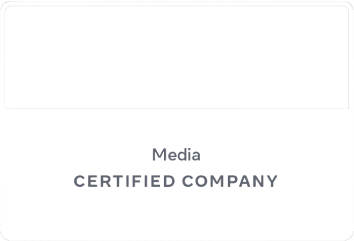


Table of Contents
- How many keywords should you target?
- Here’s how to determine how many keywords you should use on one page
- Step 1: Select your primary keyword
- Step 2: Determine your searcher’s intent
- Step 3: Choose variations of the primary keyword
- Step 4: Organize your keywords
- How to effectively position keywords on a page
- Dos and don'ts when choosing how many keywords to use on a page
- Partner with WebFX to get professional help choosing the right keywords for every page
Keywords are one of the most important parts of any SEO strategy. They tell search engines what your site is about while speaking the same language as your potential customers. Therefore, it helps to know how often you should use them on a page.
There is no specific number of keywords you should have on a page, but it’s possible to have too many or too few keywords. One keyword might not sound like much, but we promise it’s enough. “One” is the right answer, but you need to be really specific about it and pick the right one.
However, the exact keywords you insert on a page depend on content length and depth.
What should these keywords be? Where do you find them? How do you use them? Read on if you would like to find out how to go about getting the right keywords for your content strategy.
Here are some quick links for you to discover how many keywords you should target!
- How many keywords should you target?
- How to determine the number of keywords you should use on one page
- How to effectively position keywords on a page
- Dos and don’ts when choosing how many keywords to use on a page
How many keywords should you target?
So, how many keywords should you target? There’s no one-size-fits-all number of keywords that must be added to every page on your website.
However, we recommend targeting at least one keyword per page. This helps to give Google and other search engines, including answer engines like ChatGPT, a clear understanding of a page’s intent, increasing your visibility and ranking. If that keyword has close variations, find ways to weave them into the page as related keywords naturally and strategically.
Back up the primary keyword with three to five related SEO keywords or LSI keywords to ensure topical depth and better alignment with search intent. For example, if you have “emergency plumbing services” as your primary keywords, you should consider including variations, such as “24-hour plumber,” “after-hours plumbing, “on-call plumber,” and “weekend plumber” on the page to boost topical relevance and rankings.
Be as specific as you can, and include variations of a keyword only if they make sense naturally. Don’t try to cram one page full of keywords that apply to one general subject. With that kind of specificity, you can be sure that you’ll best serve the wants and needs of your users, especially through Google.
In the same light, you should avoid keyword cannibalization, which is the practice of having too many pages targeting the same keyword. Keyword cannibalization means that you’re competing against yourself for rankings, which splits your traffic and decreases your authority.
Here’s how to determine how many keywords you should use on one page
To figure out how many keywords you should target on one page, start by asking yourself a question: What is the main subject of this page?
Step 1: Select your primary keyword
Let’s say you run an e-commerce store that sells a wide range of running shoes. While the general subject is clear — shoes — you need to select a primary keyword that defines exactly what people are actually searching for on a particular page of your website.
Performing keyword research using tools such as Google Keyword Planner, Semrush, Ahrefs, and KeywordFX helps reveal the most popular search terms that align with search intent. These tools show you the approximate popularity and search volume of different phrases like “running shoes,” “athletic shoes,” and “jogging shoes.”
Alternative ways to find the right keywords for your pages include:
- Google autocomplete suggestions: When you type a query into Google’s search bar. It will automatically make suggestions that relate to your query and give you an indication of what’s currently popular on the internet.
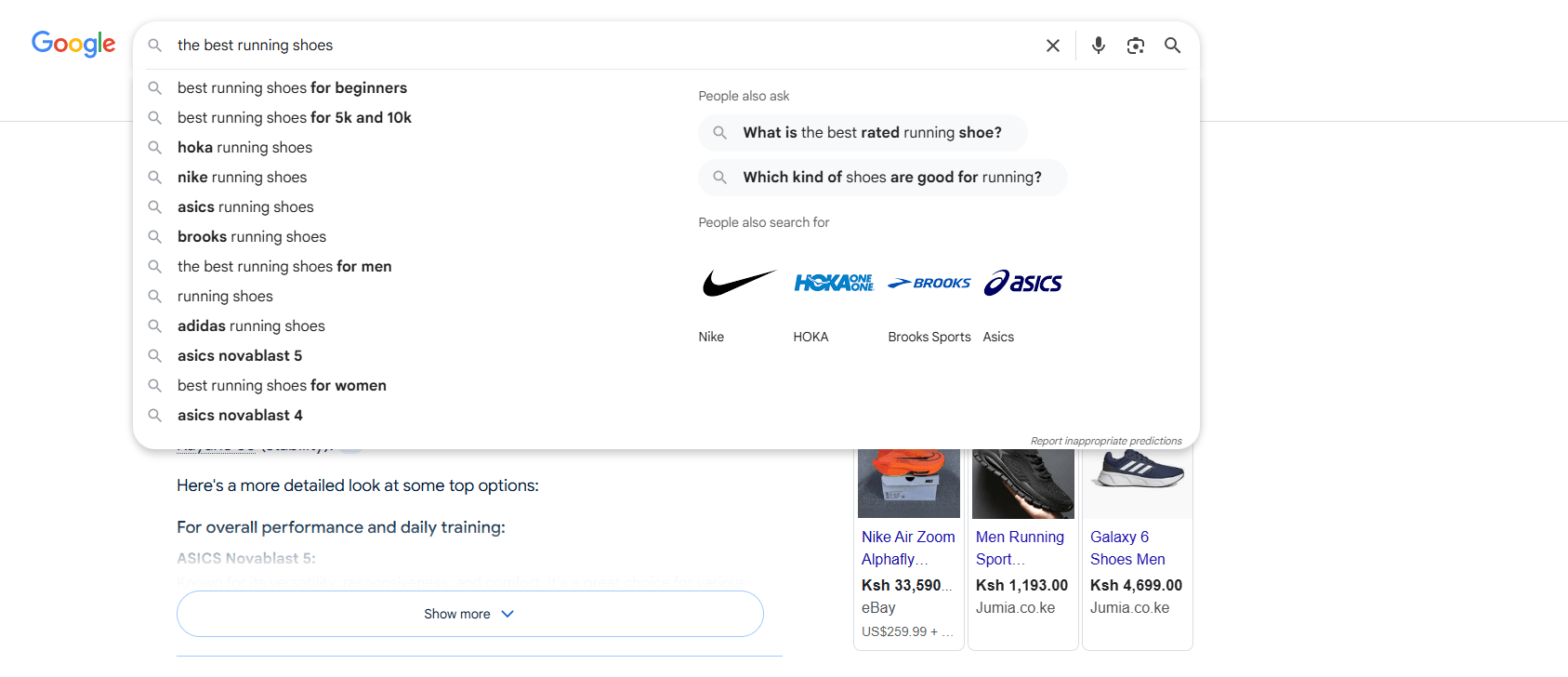
- The People Also Ask Section: This section appears right after the Google AI Overview and shares answers to closely related queries. Targeting some of the keyword variations on the PAA in your page helps to provide more in-depth information and boost visibility.
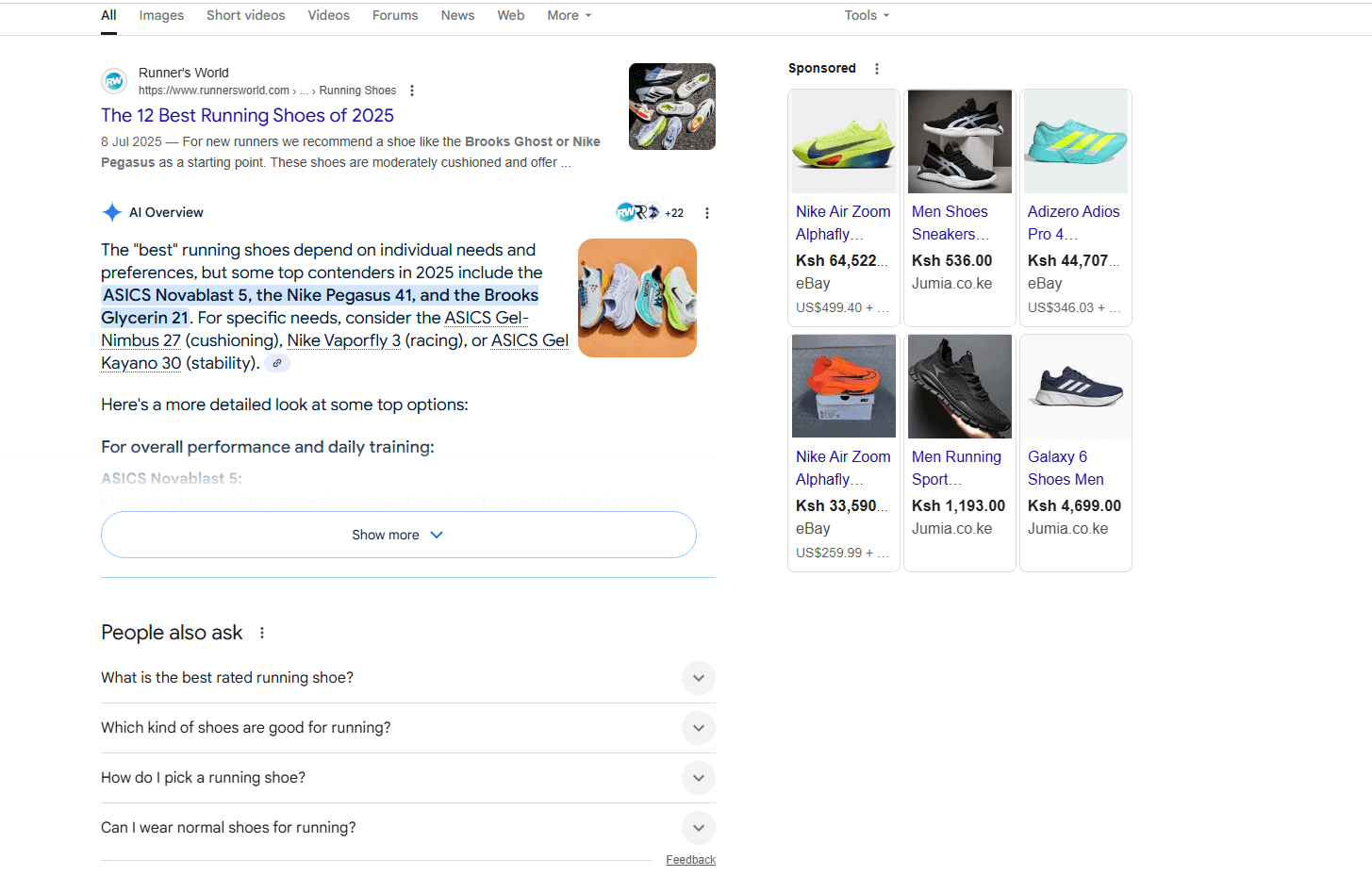
- The related searches: At the bottom of every Google results page is the Related Seraches section. It shares It shares other closely related queries with additional context or phrased differently.
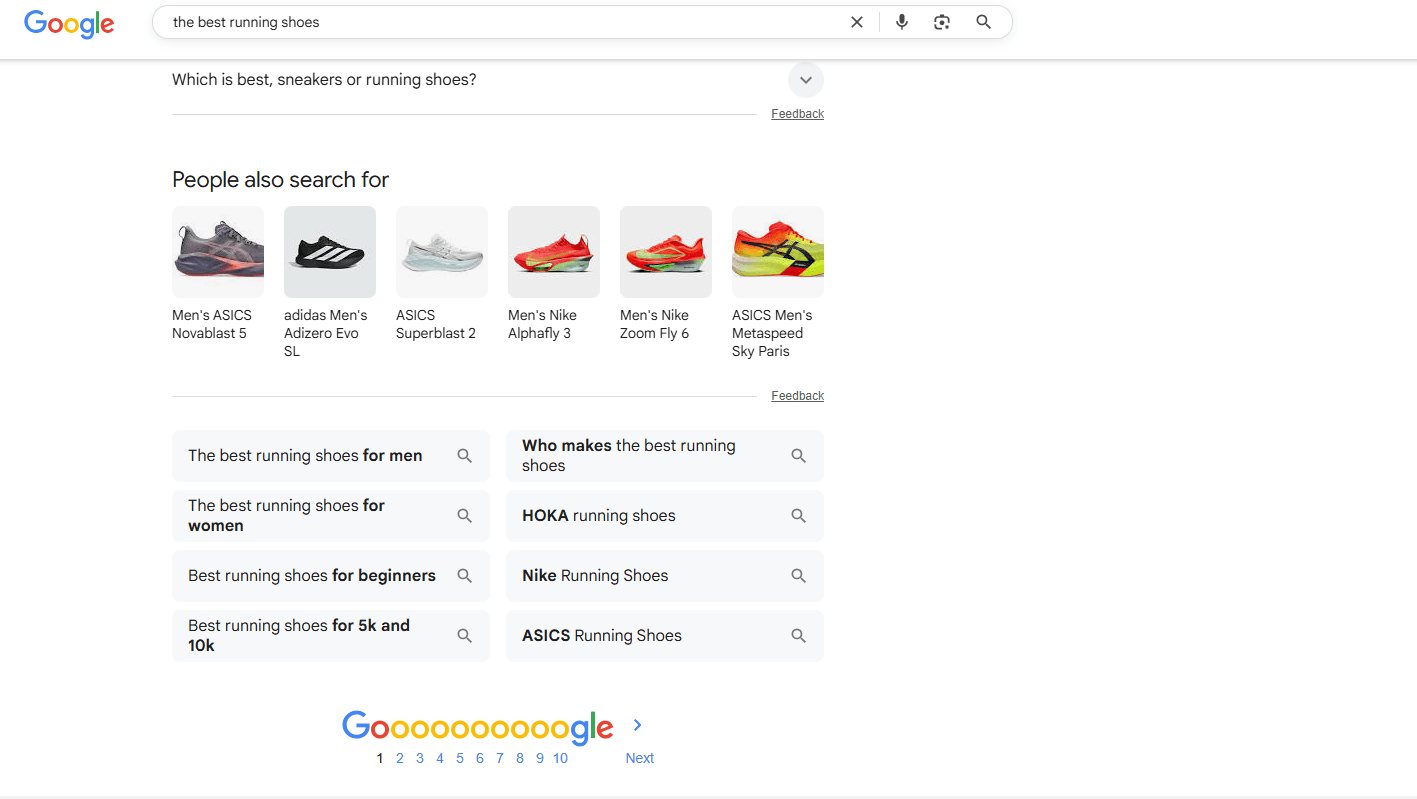
- Competitor analysis: If you are still determining what keywords you should be using, consider checking over the fence with your competitor. Doing a competitor analysis can enable you to see what keywords they are using and possibly give you a starting point.
As a result, you’re able to identify the subjects that are most relevant and widely used, so you can appeal to your target audience. They also help you understand whether the intent behind every keyword is informational, transactional, or navigational, so you can create pages that are relevant to your audience’s position on the buyer’s marketing cycle.
Step 2: Determine your searcher’s intent
Search intent, or user intent, is the goal behind a search query. It’s the reason someone types something into a search engine, and understanding it will help you create content that meets the needs of your audience.
Search intent and keywords are closely intertwined concepts, as they directly impact the effectiveness of your content strategy, including the decision about how many keywords you should target. It matches the content to users’ goals and ensures your content ranks higher and attracts more clicks.
There are four different types of search intent:
- Informational intent: Here, the user is looking for information or answers to a specific question.
- Navigational intent: The user wants to visit a specific website to find a specific brand, product, or service.
- Transactional intent: With transactional intent, the user is ready to make a purchase or take an action.
- Commercial investigation intent: The last one is where the user is researching options before making a purchase or decision.

For example:
A blog post about ‘how to bake a chocolate cake’ should focus on information keywords like chocolate cake recipes’ or ‘steps for baking a cake’ rather than transactional ones like ‘buy cake baking tools.’
We recommend keyword clustering, which involves grouping closely related keywords with the same intent on one page. This approach helps you rank for multiple variations of a keyword, improves topical relevance, and ensures your content aligns more precisely with how users search.
Step 3: Choose variations of the primary keyword
After you have the primary keyword, it’s time to find secondary keywords that support it. These secondary keywords are closely related variations that naturally fall under the same topic umbrella.
Keyword variations help you define sections on a page, expound the main topic thoroughly, and satisfy different but closely related user intents. Additionally, including various related keywords boosts your chances of ranking for related long-tail keywords.
In the above example, it means you’d consider including related keywords, like men’s running shoes, women’s running shoes, long-distance running shoes, brand-name running shoes, and discount running shoes. All these support the primary keyword “running shoes,” and you can use them on a single page by incorporating them as subheadings, product filters, and internal links.
Step 4: Organize your keywords
Finally, it’s important that you organize the keyword variations on your site in a way that makes sense to search engines and users. That means offering additional information for every sub-type of a keyword that you want to target.
So, from your “running shoes” page, users should be able to click through to a page that talks about “women’s running shoes” only. They should also be able to click to a page about “discount running shoes” and “brand name running shoes” just as easily.
Those pages should contain more specific information to reinforce that keyword. The more specific you can be, the better your chances will be of having those pages show up for even more specific keywords.
How to effectively position keywords on a page
Once you’ve decided how many keywords to use on a page, which is typically one primary keyword supported by a few closely related secondary keywords, the next step is to position them strategically.
Effectively distributing keywords on a page sends strong signals to search engines by reinforcing the page’s topical focus and boosting the visibility of these terms.
The golden rule of keyword distribution is to use them as naturally as possible on the page at least twice. The frequency of keyword use is dependent on page length. So, if your copy is over a thousand words, you could include it maybe three or four times.
You should be very keen to avoid keyword stuffing, which is the practice of overloading a page with keywords. It was common in the earlier days of SEO when more was better, but in 2025, it can cost your website rankings. Yes, you want Google to know that your page is about that topic, but you don’t want to be pushy about it.
Here are some best practices for ensuring you effectively distribute your keywords on a page:
- Add it to the page title or URL slug
- Include it in the meta description
- Introduce the main keyword early by having it in the first 100 words on your page
- Use it in your subheadings
- Try to include in your conclusion or call-to-action
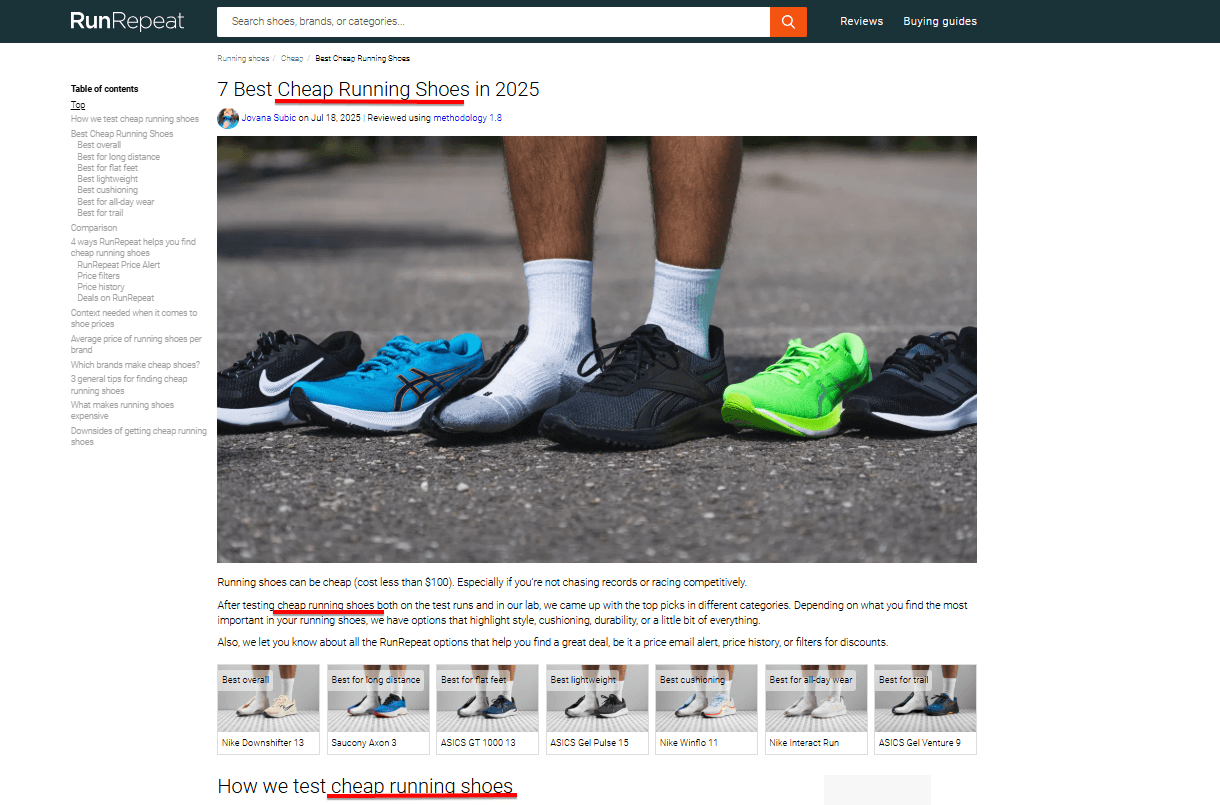
Dos and don’ts when choosing how many keywords to use on a page
Choosing how many keywords to target on a single page isn’t about cramming in as many as possible — it’s about striking the right balance between focus and flexibility. Use too few, and you may miss ranking opportunities. Use too many, and you risk diluting your content’s relevance or confusing search engines.
The following table shares some dos and don’ts that ensure you strike a balance when choosing the right number of keywords for your page.
| DOs | DON’Ts |
|
|
Partner with WebFX to get professional help choosing the right keywords for every page
Understanding how many keywords to use and where to use them is just the beginning. To truly compete in search, you need a strategy built on research, structure, and ongoing optimization.
At WebFX, our team of SEO experts helps businesses like yours develop content that ranks, converts, and scales. Whether you’re launching a new website or optimizing existing pages, we’ll help you choose the right keywords and identify high-value keyword opportunities.
Contact us today to create a keyword strategy that’ll drive measurable results for your business.
Table of Contents
- How many keywords should you target?
- Here’s how to determine how many keywords you should use on one page
- Step 1: Select your primary keyword
- Step 2: Determine your searcher’s intent
- Step 3: Choose variations of the primary keyword
- Step 4: Organize your keywords
- How to effectively position keywords on a page
- Dos and don'ts when choosing how many keywords to use on a page
- Partner with WebFX to get professional help choosing the right keywords for every page
Related Resources
- 3 Ways to Find Related Keywords and Improve Your SEO Strategy While Doing It
- Conversational Search: How Younger Generations Are Leading the AI-Powered Search Revolution
- Google Keyword Tool: Use This Free Keyword Research Tool to Find High-Value Keywords
- How Competitor Keyword Analysis Can Improve Your SEO
- How to Do Ecommerce Keyword Research to Find Revenue-Driving Keywords
- How to Do Keyword Research for SEO
- How to Find Long-Tail Keywords to Stay Ahead of the Competition
- How to Identify Quality Keywords
- How to Improve Your SEO Keyword Targeting with Motion Charts
- Keyword Density Checker Tool: How to Check Keyword Density for Free [+FAQ]
Marketing Tips for Niche Industries
- Funeral Home SEO Services
- Healthcare SEO Pricing: How Much Does Medical SEO Cost?
- Healthcare SEO: Attract More Patients Online with This Guide
- Hotel SEO: Tips, Best Practices, and More
- How SEO for Equipment Rentals Works: the Ultimate Guide
- How SEO for Machinery Manufacturers Can Help Your Business Drive More Qualified Leads
- How SEO Makes Remodeling Companies Grow
- How Talent Scouts Can Use SEO
- How Technical Schools Can Reach Students with SEO
- How Tutors Can Use SEO to Successfully Get Clients
